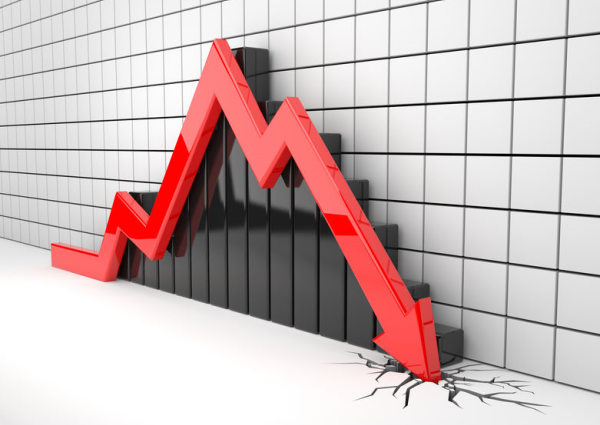What’s A Dividend Investor To Do With Transitory Inflation?
I am in the mood to ramble. (By that, I mean I’d like to share some thoughts about current broader themes affecting investing and the economy.)
We have not seen this much uncertainty in the financial world since the Global Financial Crisis nearly 15 years ago. My work lets me follow the current financial news, and I am prone to dig deeper into stories to get the details behind the headlines.
I am greatly concerned about how the financial media treats investing like gambling. Every day, I see headlines with “Make a Bet on This”-style recommendations. Everyone seems to be looking for the next hot investment theme rather than investing based on fundamentals. Of course, when a company is trading for 100 times revenue and is losing money hand over fist, the fundamentals have little meaning.
Corollary one to that thought: Once an investment has become “hot,” there is very little money left to be made. The mass of investors or traders will invariably buy in near the top and sell after the fall. These days that trend seems even more prevalent, using social media platforms to promote pump-and-dump schemes on uninformed investors.
Corollary two: While I view investing as a lifetime endeavor, what I’m seeing is a short-term focus by investors. Even investors who are close to or in retirement and should be taking a long view of the market are too focused on trying for short-term gains. I need my investment portfolio to grow and throw off income for decades, so I have designed my investment strategies to operate in the same time frame.
Speaking of the long-term, I recently spent some time studying the history of stock market corrections and bear markets. Historically, the U.S. stock market experiences, on average, a correction (down 10% to 20%) every other year, and a bear market (down more than 20%) every seven years. The recent bears have come about once a decade. My investment strategies welcome corrections, because these are opportunities during which assets can be purchased “on sale,” providing tremendous gains once the markets recover. My subscribers who followed my advice through the Spring and Summer of 2020 are thrilled with their portfolios.
I don’t practice market timing, but I always set aside some “dry powder”—cash or cash-like securities—to invest with when the stock market gets cheaper.
I don’t believe the Federal Reserve’s talk about “transitory” inflation. First, if average prices go up 10% throughout 2021, they will not come back down if inflation suddenly returns to one percent a year. In fact, prices will stay high.
I also believe the shortages we see across the economy will lead to higher prices, possibly trending ever higher for years. Auto dealers can’t get enough vehicles. Businesses can get enough employees. The cure for shortages is higher prices.
In March, I ordered a new travel trailer. I knew it would be a long wait, but I wanted to lock in the price. Due to shortages of components needed by RV manufacturers, I don’t expect to see my new trailer before August. At the same time, the same year and model of my current trailer, which I bought used a year ago, is listed on the RV sales websites for up to double what I paid.
In my opinion, the Fed is between a rock and a hard place. If inflation is real, they should raise interest rates. However, higher rates could crash the stock markets and will definitely increase the interest expenses of the federal government. Over the last two years, the U.S. government has issued so much new debt that higher interest rates could cripple the federal budget. Because the Fed governors know higher interest rates would be a disaster, they must believe—and stick to—the transitory inflation theme.
I don’t think the demand for new homes is slowing. You may have seen that mortgage applications are down, but my research indicates that there are not enough homes for sale. New home builders are slowing down, waiting for lumber costs to come back down. In my area, each existing home that goes on the market is priced $10,000 to $20,000 higher compared to the last sale, and the new listings continue to sell in a couple of weeks. A balanced real estate market has four to six months of “inventory,” which are homes listed for sale. It will be quite a time before the real estate market gets back to normal. Until then, prices will continue to rise.
I’m not quite finished yet. After all, what would a rant be without a cryptocurrency comment? Here’s a quote courtesy of Bloomberg:
The crazy thing is that crypto is still here and bigger than ever (well, almost, they were bigger a few weeks ago), despite numerous reasons for them to have died already. The space is riddled with scammers, hucksters and charlatans. Much of its existence has been in a legal grey area. The space has seen huge hacks, resulting in extraordinary amounts of money having been lost. Its advocates are known for false promises. It often doesn’t live up to the hype. When you ask what problems it solves, usually the answer is gibberish. And yet the whole space persists and, in a weird way, matures.
I recommend you think of most of the financial news to be suitable for entertainment purposes only. As for myself, I’ll work on my long-term investment strategies, use actual data to make adjustments, and be flexible and ready to take advantage of mispriced assets.
Disclaimer: The information contained in this article is neither an offer nor a recommendation to buy or sell any security, options on equities, or cryptocurrency. Investors Alley Corp. and its ...
more




